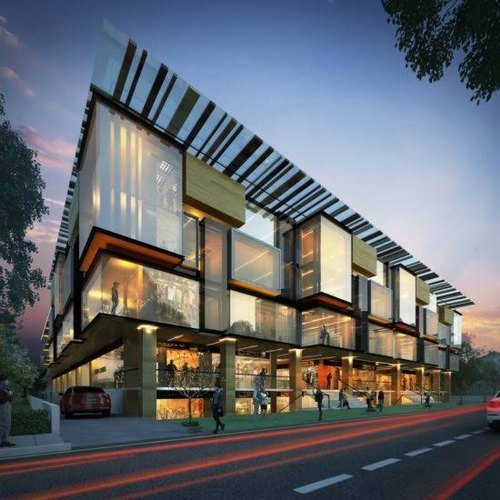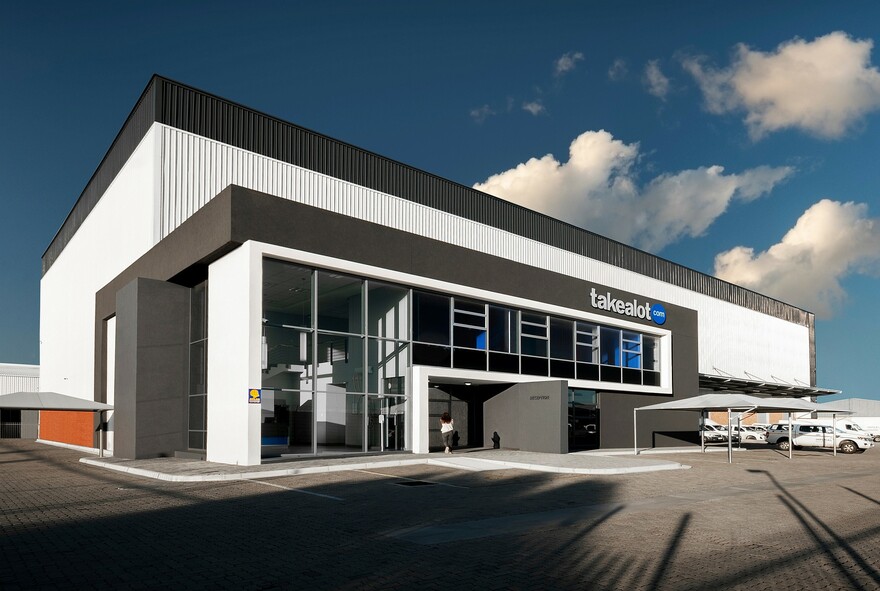Just How Commercial Architects Can Transform Your Business Area With Expert Layout Providers
Commercial architects play an essential role in reshaping service atmospheres. Their knowledge in style can greatly enhance both performance and visual appeals. By producing spaces that show a brand's identification, they improve functional effectiveness and employee fulfillment. The effect of their work extends past simple appearance. Understanding the nuances of cooperation and sustainability can lead to transformative outcomes. What certain elements make these transformations effective?
Understanding the Duty of Commercial Architects
Commercial architects play an important role in forming service environments that are both practical and cosmetically pleasing. They concentrate on creating rooms customized to the details needs of organizations, guaranteeing that every square foot is used properly. These experts incorporate aspects such as spatial layout, lights, and products to enhance performance and employee well-being. By working together with clients, business architects gather insights right into functional needs and brand identification, converting these right into innovative designs.Additionally, they browse intricate building codes and zoning legislations, making certain conformity while optimizing style capacity. Their expertise reaches sustainability methods, promoting power efficiency and eco-friendly products in their projects. Via their creative vision and technological expertise, industrial architects not only develop enticing rooms yet additionally foster atmospheres that advertise collaboration and development. Eventually, their payments significantly affect the overall success and picture of a company.
Benefits of Expert Style Solutions

Customizing Rooms to Your Brand Identification
Customizing areas to a brand's identity is important for sharing its core values and mission. Commercial architects play a critical function in improving an organization's aesthetic identification with thoughtful design options. By straightening building elements with brand name principles, firms can develop environments that resonate with customers and workers alike.
Reflecting Brand Worths
Exactly how can a properly designed room personify a business's core values? Commercial architects play an important duty fit environments that reverberate with a brand name's identification. By incorporating aspects such as shade systems, materials, and layouts, they produce rooms that show the significance of the organization. A tech firm may decide for open layouts and modern furnishings to convey development and collaboration, while a high-end brand might select stylish finishes and intimate spaces to evoke exclusivity and class. Thoughtful layout not only enhances capability but additionally promotes a strong connection between staff members, customers, and the brand. Eventually, a well-crafted atmosphere serves as a tangible representation of a business's objective and vision, strengthening its worths at every touchpoint.
Enhancing Visual Identification
What aspects can efficiently boost a brand's visual identification within a commercial space? Commercial architects play a critical duty in integrating layout functions that resonate with a firm's ethos. Color design, typography, and materials can be purposefully picked to reflect brand name worths while guaranteeing visual charm. Additionally, integrating logo designs and brand imagery right into the style can produce a cohesive visual narrative. Lighting design can better improve the environment, guiding customer assumptions and experiences (commercial architects). Design and furnishings choices must line up with the brand's personality, whether it's modern, traditional, or ingenious. Eventually, a properly designed business room not just draws in clients yet likewise enhances brand name recognition, producing an enduring impact that promotes loyalty and involvement
Enhancing Performance and Effectiveness
Enhancing capability and effectiveness in commercial spaces entails optimizing space utilization and designing process that simplify operations. Architects concentrate on creating layouts that minimize lost room while assisting in smooth adjustments between tasks. This technique not just enhances productivity however additionally contributes to a more cohesive functioning atmosphere.
Maximizing Room Usage
Effective room utilization is a vital aspect in commercial design, where the design needs to balance visual appeals with performance (commercial architects). Architects use numerous methods to make best use of offered square footage while making certain that each location serves a distinctive objective. By assessing workflow, web traffic patterns, and user requirements, architects can create designs that boost both staff member performance and customer experience. Multi-functional areas, adaptable furnishings arrangements, and maximized storage space solutions are necessary components in attaining this objective. Furthermore, integrating natural light and open spaces promotes a much more inviting ambience, additional elevating the energy of the environment. Ultimately, reliable area utilization not only enhances operational performance however likewise contributes positively to the general brand name picture, making it a necessary factor to consider in commercial design
Streamlined Process Design
How can visit this site right here a well-designed operations change a business room into a hub of efficiency? Structured workflow style concentrates on maximizing the physical design and functional processes within an organization setting. By purposefully organizing workstations, conference areas, and resources, architects can get rid of unneeded motion and enhance partnership. This thoughtful style reduces interruptions and facilitates communication, allowing staff members to concentrate on their jobs extra effectively. In addition, incorporating Get the facts innovation right into the workflow can even more automate procedures, decreasing time invested on routine tasks. Therefore, businesses experience boosted staff member morale and enhanced result, producing a vibrant atmosphere that fosters technology. Ultimately, buying streamlined workflow layout not only enhances capability however also places an industrial room for sustainable growth and success.
Cultivating Cooperation Via Layout
Although modern-day workspaces frequently prioritize private efficiency, the style of industrial rooms significantly stresses partnership as an essential chauffeur of advancement and team communication. Architects play an important role in producing settings that promote communication among employees. Open up layouts, multifunctional rooms, and purposefully placed communal locations encourage spontaneous conversations and brainstorming sessions.Incorporating aspects such as movable furnishings and versatile conference room enables teams to reconfigure rooms based upon their collaborative needs. Additionally, integrating innovation, like interactive whiteboards and video clip conferencing tools, improves the capability to communicate properly, no matter location.Natural light and biophilic layout elements additionally add to a more inviting atmosphere, advertising comfort and wellness, which are important for effective team effort. By concentrating on these elements, commercial architects can produce dynamic atmospheres that not only improve cooperation however also drive total organization success.
Lasting Design Practices in Commercial Architecture

Case Researches: Effective Makeovers by Commercial Architects
The implementation of sustainable layout techniques has not helpful hints just reshaped the technique to commercial style yet has also caused exceptional changes in different company rooms. One notable instance is the redesign of a technology company's headquarters, where architects integrated natural light and eco-friendly walls, causing improved staff member health and productivity. This transformation lowered power expenses by 30% and enhanced the firm's public image.In an additional instance, a retailer went through a total overhaul, using redeemed materials and energy-efficient systems. This not only brought in eco-conscious customers however also raised foot traffic by 25%. A third case involved a corporate office that accepted an open-plan design with adaptable work spaces, cultivating collaboration among groups. The architects' emphasis on producing a lively and versatile atmosphere significantly enhanced staff member fulfillment. These situation studies exemplify exactly how commercial architects can create impactful spaces that straighten with business objectives and sustainability efforts.
Often Asked Questions
How Much Do Commercial Design Provider Commonly Price?
The expense of industrial architecture services varies extensively, usually ranging from $100 to $250 per hour. Variables affecting prices include task intricacy, area, and the designer's experience, making it important for companies to acquire in-depth price quotes.
What Types of Services Benefit The Majority Of From Commercial Architects?
Various companies, consisting of retail, hospitality, and company workplaces, considerably gain from industrial architects. These specialists boost capability, appearances, and brand identity, guaranteeing rooms are optimized for consumer interaction and employee performance, eventually promoting service growth.
How much time Does an Industrial Layout Job Typically Take?
The timeline for a business design project normally ranges from numerous weeks to several months. Factors affecting duration consist of job complexity, regulative approvals, and cooperation among stakeholders, every one of which can influence overall conclusion time.
Can I Employ a Commercial Designer for Renovations Only?
Yes, employing an industrial designer for renovations is viable. Lots of architects concentrate on renovation jobs, giving expertise in maximizing existing spaces while adhering to guidelines and improving functionality, appearances, and total worth of business setting.
What Credentials Should I Try to find in an Industrial Engineer?

Comments on “commercial architects and the Power of Collaborative Design”